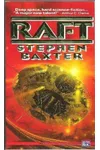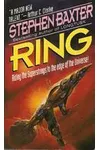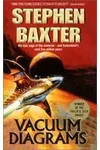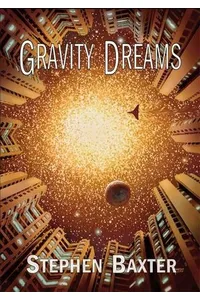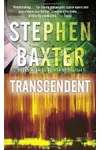Step into the mind-bending universe of the Xeelee Sequence, where humanity battles for survival against a godlike alien race across billions of years! Written by Stephen Baxter, this hard science fiction saga blends cutting-edge physics with epic storytelling, exploring cosmic mysteries and human resilience in a universe teeming with wonders and dangers. Ready to explore a saga that redefines the scope of sci-fi?
With its sprawling timeline and intricate concepts, the Xeelee Sequence isn’t just a series—it’s a journey through the very fabric of existence. From black holes to time travel, Baxter’s vision is as ambitious as it is awe-inspiring, perfect for fans craving a deep dive into the cosmos.
How Xeelee Began
In the mid-1980s, Stephen Baxter, a British author with a background in mathematics and engineering, penned a short story called 'The Xeelee Flower' for Interzone magazine. This spark ignited the Xeelee Sequence, a saga that grew into novels, novellas, and short stories over decades. Inspired by pioneers like H.G. Wells and Arthur C. Clarke, Baxter aimed to craft a 'future history' grounded in hard science, weaving humanity’s evolution with cosmic conflicts against the enigmatic Xeelee, a Type V Kardashev civilization.
Baxter’s rigorous scientific approach, paired with his fascination for vast timescales, set the series apart. His vision expanded from a single story into a universe-spanning epic, with the first novel, Raft, published in 1991, earning an Arthur C. Clarke Award nomination.
The Heart of Xeelee
The Xeelee Sequence comprises nine novels and over 50 short stories, with key titles shaping its legacy. Raft introduces a universe where gravity is a billion times stronger, following humans surviving near a black hole. Timelike Infinity dives into time travel, as rebels use wormholes to defy the alien Qax’s control over Earth. Flux explores microscopic humans engineered to live inside a neutron star, while Ring unveils a cosmic artifact that could alter the universe’s fate.
Themes of survival, hubris, and cosmic insignificance permeate the series. Humanity’s relentless expansion clashes with the Xeelee’s indifference and their war against dark-matter Photino Birds. Baxter’s style is dense with quantum mechanics and relativity, yet it evokes wonder through vivid settings like primordial black holes and galaxy-spanning structures. The series’ scope, from the Big Bang to the universe’s heat death, challenges readers to ponder existence itself.
Unlike character-driven sagas, Xeelee prioritizes ideas over individuals, with figures like Michael Poole serving as lenses for cosmic exploration. This conceptual focus, paired with grimdark undertones, makes the series a unique blend of intellectual rigor and existential dread.
Why Xeelee Resonates
The Xeelee Sequence has carved a niche in hard sci-fi, praised by authors like Paul J. McAuley for its fearless exploration of inhuman timescales. Its influence lies in its ambition, inspiring readers and writers to grapple with humanity’s place in an indifferent cosmos. Fans on platforms like Reddit laud its 'mind-bending' ideas, comparing its grimness to Warhammer 40k, but with a scientific edge that feels eerily plausible.
Despite its niche status, the series’ blend of cosmic horror and hope endures. Its refusal to glorify human supremacy, instead portraying humanity as tenacious yet flawed, resonates with readers seeking profound, challenging sci-fi. The Xeelee Sequence remains a testament to Baxter’s ability to merge adventure with philosophy.
- First Published: 1991 (Raft)
- Books: 9 novels, 3 short story collections
- Awards: BSFA Award for Best Short Fiction (2004)
Grab Raft and dive into the Xeelee Sequence’s cosmic odyssey! Whether you’re a sci-fi veteran or a curious newcomer, this series promises a thrilling, brain-twisting ride through the universe’s deepest mysteries.
